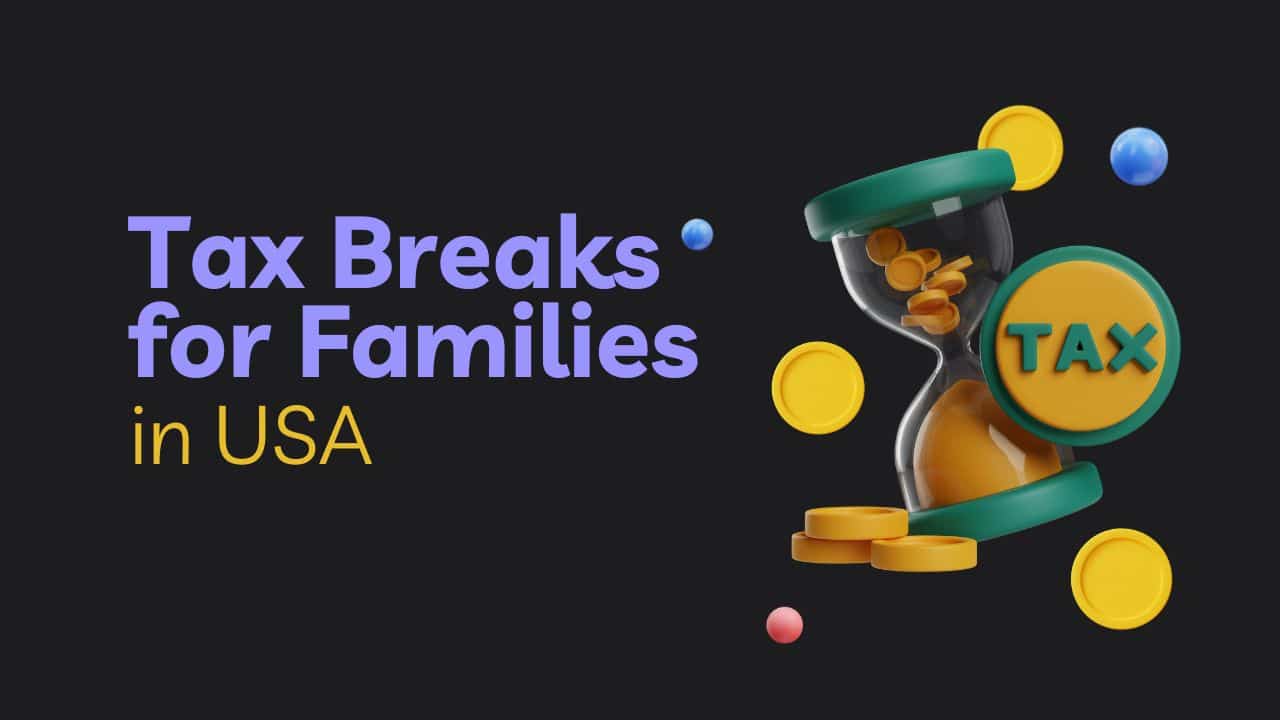Raising a family in the USA can be a rewarding but financially challenging endeavor. Fortunately, the federal and state governments provide various tax breaks to alleviate this burden, making it easier for families to save for education, healthcare, and other essential needs.
By understanding these benefits, families can reduce their taxable income and maximize their savings. In this article, we’ll explore the top 10 tax breaks for families in the USA, how to qualify for them, and tips for claiming these valuable benefits.
What Are Tax Breaks?
Tax breaks are financial benefits provided by the government to reduce the amount of taxes you owe. They typically come in three forms:
- Tax Credits: Directly reduce the amount of taxes owed, often dollar-for-dollar.
- Deductions: Lower your taxable income, which indirectly reduces the taxes you pay.
- Exemptions: Allow specific amounts of income to be excluded from taxation.
For families, these tax breaks can significantly offset the costs of raising children, healthcare, education, and more.
The Top 10 Tax Breaks for Families in the USA
Navigating the complexities of the U.S. tax system can feel overwhelming, especially for families juggling financial responsibilities. Fortunately, various tax breaks are designed to ease this burden, providing families with substantial savings on their tax bills.
From credits that directly reduce the taxes you owe to deductions that lower your taxable income, these tax benefits can help families allocate more resources toward education, childcare, and long-term savings.
Below, we’ll dive into the top 10 tax breaks for families, explaining how they work, who qualifies, and how to claim them effectively. By understanding these opportunities, families can ensure they are taking full advantage of the financial relief available.
1. Child Tax Credit (CTC)
The Child Tax Credit provides financial relief for families raising children under 17.
- Maximum Benefit: Up to $2,000 per child.
- Eligibility Criteria:
- Child must be under 17 by the end of the tax year.
- Parents must meet income thresholds (phases out for single filers earning above $200,000 and married filers above $400,000).
- Claiming the Credit: Use IRS Form 8812 when filing your tax return.
- Example: A family with two eligible children earning $75,000 annually could reduce their tax liability by $4,000.
2. Earned Income Tax Credit (EITC)
Designed for low-to-moderate-income families, the EITC provides a significant boost.
- Maximum Benefit: Up to $6,660 for families with three or more children.
- Eligibility Criteria:
- Earned income and Adjusted Gross Income (AGI) limits apply based on family size.
- Must have valid Social Security numbers for all family members.
- Claiming the Credit: Complete Schedule EIC with your tax return.
- Example: A single parent with two children earning $25,000 annually could qualify for over $5,000 in EITC.
3. Dependent Care Credit
This credit offsets childcare costs for working parents.
- Maximum Benefit: Covers up to $3,000 for one child and $6,000 for two or more children.
- Eligibility Criteria:
- Expenses must be for children under 13 or dependents incapable of self-care.
- Both parents must work or attend school.
- Claiming the Credit: File IRS Form 2441.
- Example: A family spending $5,000 on daycare could receive up to $1,050 in credit.
4. Education Tax Credits
Families paying for higher education can benefit from the American Opportunity Credit and Lifetime Learning Credit.
- American Opportunity Credit: Up to $2,500 per eligible student for undergraduate education.
- Lifetime Learning Credit: Up to $2,000 for any level of education, including graduate studies.
- Eligibility Criteria: Income thresholds apply (phase-out begins at $80,000 for single filers and $160,000 for married filers).
- Example: Parents paying $10,000 for their child’s college tuition could receive $2,500 through the American Opportunity Credit.
5. Adoption Tax Credit
Families adopting children can claim significant expenses.
- Maximum Benefit: Up to $15,950 per child (2024 figures).
- Eligible Expenses: Adoption fees, attorney costs, and court fees.
- Claiming the Credit: Use Form 8839 for Qualified Adoption Expenses.
- Example: A family spending $12,000 on adoption could receive a dollar-for-dollar credit on these expenses.
6. Mortgage Interest Deduction
Families with home loans can deduct mortgage interest from their taxable income.
- Maximum Deduction: Interest on loans up to $750,000 (post-2017 loans).
- Eligibility Criteria: Must itemize deductions on Schedule A.
- Example: A family paying $10,000 in mortgage interest could reduce taxable income by that amount, lowering their overall tax liability.
7. State and Local Tax Deduction (SALT)
The SALT deduction allows families to deduct state and local taxes from their federal taxable income.
- Maximum Deduction: Up to $10,000 for married filers.
- Eligible Taxes: Includes property taxes and state income taxes.
- Example: A family paying $8,000 in property taxes and $2,000 in state income taxes could deduct the full $10,000.
8. Health Insurance Premium Tax Credit
Families purchasing insurance via the marketplace may qualify for premium assistance.
- Eligibility Criteria: Income must be 100%-400% of the federal poverty line.
- Benefit: Reduces monthly insurance premiums or provides a refund at tax time.
- Example: A family of four earning $60,000 annually could save thousands on health insurance costs.
9. Dependent Care Flexible Spending Account (FSA)
An FSA lets families use pre-tax dollars for childcare expenses.
- Maximum Contribution: Up to $5,000 annually.
- Eligible Expenses: Daycare, after-school care, and summer camps.
- Example: A family contributing $5,000 to an FSA saves up to $1,200 in taxes if they’re in the 24% tax bracket.
10. Tax Breaks for 529 College Savings Plans
529 plans provide tax advantages for saving for a child’s education.
- Benefit: Earnings grow tax-free, and withdrawals for qualified expenses are also tax-free.
- State Incentives: Many states offer additional deductions or credits.
- Example: A family saving $10,000 annually in a 529 plan for their child’s college fund can enjoy tax-free growth.
How Families Can Maximize These Tax Breaks
- Stay Organized: Maintain receipts, statements, and necessary documentation.
- Consult a Professional: A tax advisor can help identify all eligible deductions and credits.
- File Electronically: Use reliable tax software to avoid errors and maximize benefits.
Recent Changes and Updates in Tax Laws
Recent laws, such as the Tax Cuts and Jobs Act (TCJA), have introduced new limits and benefits. For example, the Child Tax Credit saw significant increases in 2021 and remains a critical benefit for families.
Common Mistakes to Avoid When Claiming Tax Breaks
- Failing to check eligibility requirements.
- Missing documentation deadlines.
- Forgetting to adjust withholdings after income changes.
FAQs About Tax Breaks for Families
1. Can I claim multiple tax breaks in the same year?
Yes, as long as you meet the eligibility criteria for each.
2. What happens if my income changes mid-year?
Update your tax withholding or estimated payments to avoid underpayment penalties.
3. Can divorced parents share tax credits?
Typically, only the custodial parent can claim child-related credits unless otherwise agreed.
Takeaways
Tax breaks are an essential lifeline for families in the USA, helping to reduce financial burdens and pave the way for long-term financial stability.
By taking full advantage of these opportunities, families can focus on what truly matters: building a bright future for their loved ones. Be proactive, stay informed, and consult a tax professional to ensure you’re maximizing every benefit available.









































